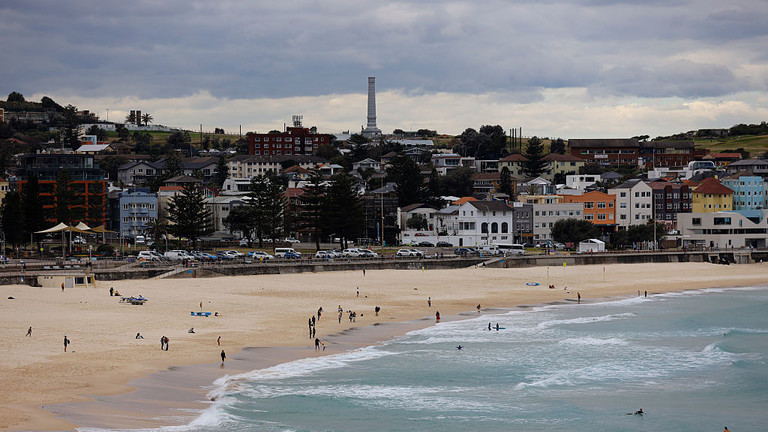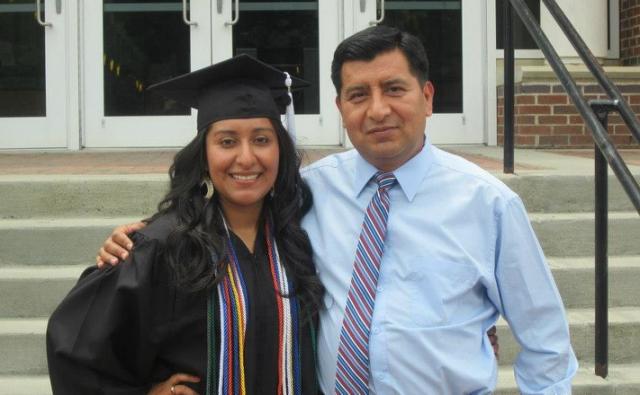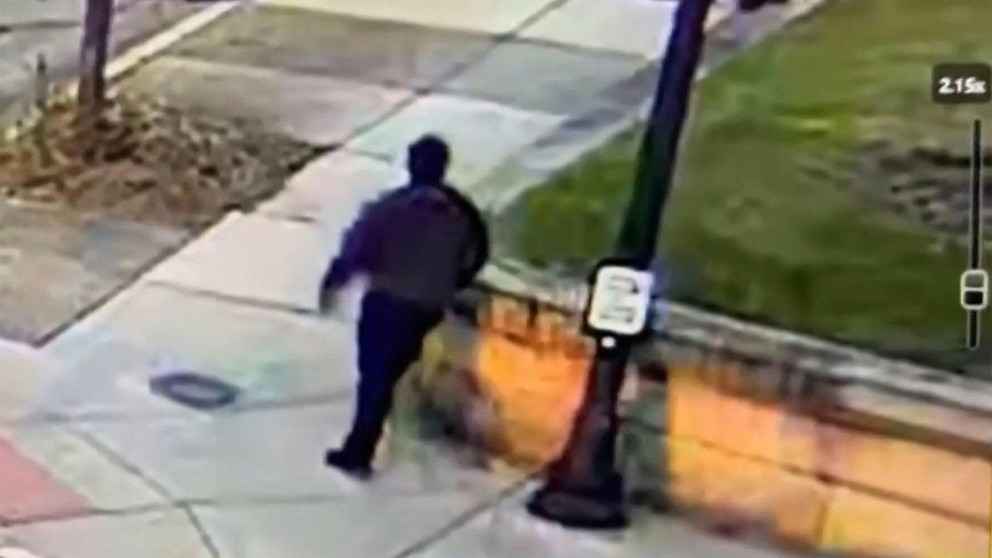
This article is more than
7 year oldHe Begged ICE To Let Him See His Daughter Graduate. But He's An Easy Target For Removal.

The 51-year-old father of three had been regularly checking in with the agency for seven years without a problem. But when Garcia arrived for his most recent appointment in Atlanta, in January, the agency detained him.
Garcia told the officer he wanted to stay in the U.S. until at least May 2019, when his eldest daughter will graduate from medical school. He hoped to watch her walk across the stage at Loyola University Chicago Stritch School of Medicine and accept her diploma. If he could just be present for that moment, he’d buy his own ticket to Guatemala, the country he left 23 years ago to seek asylum in the U.S.
The officer said no.
Garcia’s been locked up in detention ever since. His daughters are now petitioning the Trump administration for his release and hope to have his removal order overturned in court. He is scheduled for deportation on April 4.
Garcia is one of a growing number of undocumented immigrants being detained during periodic check-ins with ICE as part of President Donald Trump’s efforts to increase deportations. Like many of them, he was ordered removed by a judge but was allowed to stay in the U.S. for years as long as he appeared at appointments and otherwise kept out of trouble.
Now, these immigrants are easy pickings for removal — they walk into ICE offices for check-ins and aren’t allowed out, based on orders from years back that they can’t easily fight.
Detaining people like Garcia at check-ins is an increasingly common tactic to “rack up numbers of deportations without needing to go back into the immigration court system,” according to Charles Roth, director of litigation of the National Immigrant Justice Center, who is not representing Garcia but is familiar with his case. “What the immigration authorities tend to do is to go after the low-hanging fruit.”
ICE officials did not respond to a request for comment on why Garcia was detained.
But Garcia’s deportation is now just a week away. That means he could soon be separated from his family, including three daughters: one a U.S. citizen, one a green-card holder, and one who has temporary protections under the Deferred Action for Childhood Arrivals program, or DACA. That daughter, Belsy Garcia Manrique, is in her third year at Stritch School of Medicine, which has made a concerted effort to enroll DACA holders and rally behind them.
For now, Garcia is at Stewart Detention Center in Lumpkin, Georgia, where he sleeps in a room with 60 other men. Many of the other men he’s talked to have also been in the U.S. for years and have clean criminal records.
“They are not sending only people that deserve to be sent,” Garcia said. “They are sending everybody.”
Garcia came to the U.S. in 1995 seeking asylum. In Guatemala, he was studying to be an accountant and was in a leadership position at school when he began to receive threats, so he decided to go to the U.S. for safety and a better future. His case moved quickly through the court process — unusually quickly compared to most nationwide, Roth said. Garcia didn’t have an attorney and was given only weeks to find one. He didn’t, and ultimately was ordered deported. That year, 88 percent of unrepresented asylum seekers were denied in court, versus 66 percent of those with lawyers.
Garcia didn’t know that he could appeal, and because he didn’t do so at the time, it will be more difficult to have the removal overturned now. He stayed in the U.S. without documents and began to learn English by writing down every word he saw on the street and then looking them up later in a dictionary. He moved to Calhoun, Georgia, worked two jobs, finished his GED and studied for a certification in accounting.
In 2011, ICE appeared at Garcia’s home and detained him. But an officer told him he could be released if he answered questions about his employer for an investigation into the employer’s hiring practices, and he did. ICE gave him a stay of removal, which is not legal status but allowed him to remain if he checked in periodically.
While President Barack Obama was in office, Garcia felt mostly safe. He started to buy houses, repair them and sell them, and then to buy land and build the houses from the ground up, teaching himself methods on YouTube and employing workers.
But when Trump was elected, Garcia began to worry, and talked to his wife about finding another solution, like moving to Canada. The family talked over the holidays about what was happening with ICE, and knew it was possible he could be detained at his Jan. 23 check-in.
Garcia wants to do the right thing. He pays taxes, employs contractors and has a family in the U.S. he wants to be with. He fears going back to Guatemala, where he is worried he could be targeted for extortion because of his ties to the U.S. He has no pathway to become a citizen. But he also believes he’s already achieved his American dream by helping his daughters succeed.
So Garcia went to the appointment in Atlanta with his two youngest daughters, who weren’t allowed in, even though family members had accompanied him on previous visits.
Inside the ICE facility, Garcia begged the officer to let him stay. But the man said his hands were tied.
Garcia texted his eldest daughter, the doctor-in-training.
“They are going to detain me my child,” he wrote. “Keep going my child, you can do it.”
Then the officers took him away.
- This article originally appeared on HuffPost.




